
Nan: Thailand's Hidden Gem
Explore the tranquil beauty and rich cultural heritage of Nan, Thailand's hidden gem in the northern highlands, perfect for an authentic and peaceful getaway.
Nestled in the lush valleys of northern Thailand, Nan is a serene and captivating city that offers an authentic Thai experience away from the bustling crowds. Rich in culture and history, Nan provides a perfect blend of natural beauty and traditional charm. Visitors to Nan can explore its many temples, such as Wat Phumin, famous for its beautiful murals and unique architecture. The city's National Museum, housed in a former royal palace, offers a glimpse into the region's fascinating past. For nature lovers, the surrounding mountains and national parks provide ample opportunities for trekking, bird watching, and experiencing the local flora and fauna. Nan is also home to vibrant local markets where you can sample delicious northern Thai cuisine and shop for unique handicrafts. The slow-paced lifestyle and welcoming locals make it an ideal destination for those looking to unwind and immerse themselves in the culture of northern Thailand.
Local tips in Nan
- Visit early in the morning to catch the serene atmosphere of the temples without the crowds.
- Rent a bicycle to explore the city and its surroundings at your own pace.
- Don't miss the night markets for delicious local street food and unique handicrafts.
- Take a day trip to Doi Phu Kha National Park for stunning mountain views and waterfalls.
- Learn a few basic Thai phrases; the locals appreciate it and it enhances your experience.
Nan: Thailand's Hidden Gem
Nestled in the lush valleys of northern Thailand, Nan is a serene and captivating city that offers an authentic Thai experience away from the bustling crowds. Rich in culture and history, Nan provides a perfect blend of natural beauty and traditional charm. Visitors to Nan can explore its many temples, such as Wat Phumin, famous for its beautiful murals and unique architecture. The city's National Museum, housed in a former royal palace, offers a glimpse into the region's fascinating past. For nature lovers, the surrounding mountains and national parks provide ample opportunities for trekking, bird watching, and experiencing the local flora and fauna. Nan is also home to vibrant local markets where you can sample delicious northern Thai cuisine and shop for unique handicrafts. The slow-paced lifestyle and welcoming locals make it an ideal destination for those looking to unwind and immerse themselves in the culture of northern Thailand.
When is the best time to go to Nan?
Iconic landmarks you can’t miss
Wat Phumin
Experience the serene beauty and rich cultural heritage of Wat Phumin, a stunning Buddhist temple in Nan, Thailand.

Wat Phra That Khao Noi
Experience the spiritual tranquility and stunning views at Wat Phra That Khao Noi, a must-visit Buddhist temple in Nan, Thailand.

Doi Samer Dao
Discover the breathtaking beauty and serene atmosphere of Doi Samer Dao, a scenic mountain retreat in Thailand's Nan province, perfect for nature lovers.

Bo Kluea Rock Salt Well
Explore the historic Bo Kluea Rock Salt Well in Nan, Thailand, where tradition meets natural beauty in a unique cultural experience.

Doi Phu Kha National Park
Explore the breathtaking landscapes and rich biodiversity of Doi Phu Kha National Park, a hidden gem in northern Thailand perfect for nature lovers.

Wat Ming Mueang
Explore Wat Ming Mueang, a serene Buddhist temple in Nan, Thailand, known for its stunning architecture, tranquil gardens, and rich cultural history.

Khun Sathan National Park
Explore the breathtaking landscapes and diverse wildlife of Khun Sathan National Park, a true haven for nature lovers in Thailand.

Nan Riverside Art Gallery
Explore contemporary art at the Nan Riverside Art Gallery, a vibrant hub of creativity by the serene riverside in Nan, Thailand.

ถนนคนเดินกลางคืนน่าน (Nan Night Food Market)
Discover the vibrant flavors and cultural richness at Nan Night Food Market, a must-visit culinary destination in Thailand's picturesque Nan province.

Nan National Museum
Explore Nan National Museum: A Cultural Gem in Thailand's Northern Province, Showcasing Rich Heritage and Artistry.

Sapan Waterfall
Explore the serene beauty of Sapan Waterfall in Nan, Thailand, where nature's tranquility meets breathtaking scenery.
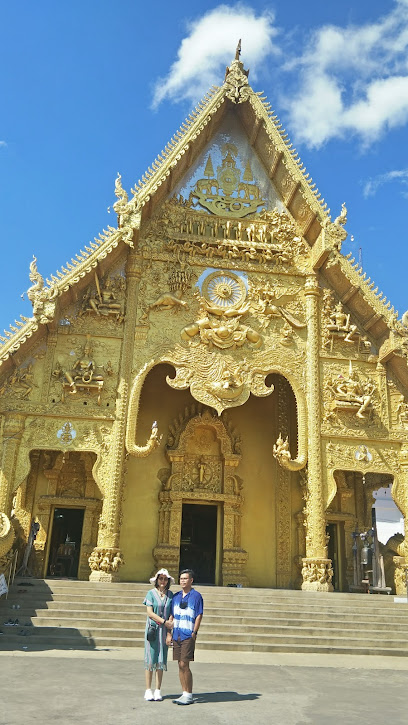
Si Nan National Park
Explore the breathtaking landscapes and rich biodiversity of Si Nan National Park - a hidden gem in Thailand for nature lovers and adventurers alike.

Sao Din Na Noi
Explore the enchanting landscapes of Sao Din Na Noi, a breathtaking natural wonder in Thailand's Nan province featuring unique sandstone formations.

Nan Noble House
Immerse yourself in the rich culture and history of northern Thailand at Nan Noble House, a captivating local history museum in Nan.

Wat Hua Khuang
Discover the tranquility and cultural richness of Wat Hua Khuang, a Buddhist temple in Nan, Thailand, where spirituality meets stunning architecture.

Unmissable attractions to see
Wat Phra That Chae Haeng
Explore the spiritual heart of Nan at Wat Phra That Chae Haeng, a stunning Buddhist temple with rich history and breathtaking views.

Wat Phumin
Discover the artistic beauty and spiritual essence of Wat Phumin, a must-visit Buddhist temple in Nan, Thailand, showcasing rich cultural heritage.

Wat Phra That Khao Noi
Discover the spiritual tranquility and stunning views of Wat Phra That Khao Noi, a cultural gem in the heart of Nan, Thailand.

Doi Samer Dao
Experience the breathtaking views and serene beauty of Doi Samer Dao, a must-visit tourist attraction in Nan, Thailand.

Wat Si Phan Ton
Discover tranquility and cultural richness at Wat Si Phan Ton, a stunning Buddhist temple in Nan, Thailand, perfect for reflection and exploration.

Doi Phu Kha National Park
Explore Doi Phu Kha National Park, a breathtaking blend of nature, adventure, and cultural richness in Thailand's stunning Nan province.

Wat Ming Mueang
Experience the serene beauty and cultural richness of Wat Ming Mueang, a stunning Buddhist temple in the heart of Nan, Thailand.

Nan Riverside Art Gallery
Explore contemporary art at Nan Riverside Art Gallery, a stunning riverside museum showcasing local and international modern artworks in a serene setting.

Nan National Museum
Explore the vibrant history and culture of Northern Thailand at the Nan National Museum, where heritage comes to life through fascinating exhibits.

Wat Suan Tan
Experience the tranquility and cultural richness of Wat Suan Tan, a stunning Buddhist temple showcasing exquisite Lanna architecture in Nan, Thailand.

Sao Din Na Noi
Discover the breathtaking natural beauty of Sao Din Na Noi, a unique geological wonder in Thailand's Nan Province, perfect for nature lovers and adventure seekers.

Nan Noble House
Explore Nan's rich cultural heritage at Nan Noble House, a local history museum showcasing the province's traditions, art, and lifestyle.

Wat Hua Khuang
Discover the tranquil beauty of Wat Hua Khuang, a stunning Buddhist temple in Mueang Nan District, rich in culture and spirituality.

Tham Pha Tub Forest Park
Explore the breathtaking landscapes and rich biodiversity of Tham Pha Tub Forest Park, a must-visit national park in Nan, Thailand, for nature lovers and adventurers.

Bali Nan
Explore the enchanting beauty and rich culture of Bali Nan in Thailand’s Santi Suk District, a perfect getaway for nature lovers and cultural enthusiasts.

Essential places to dine
Huanam Mushroom Farm
Discover delicious mushroom cuisine at Huanam Mushroom Farm in Nan, Thailand – where nature meets culinary delight in a serene setting.

Wanda Curry and Rice
Discover the flavors of Thailand at Wanda Curry and Rice - where fast food meets authentic Thai cuisine in the heart of Nan.
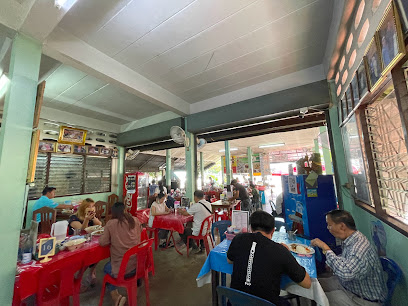
Huen Horm Restaurant
Discover authentic Thai flavors at Huen Horm Restaurant in Mueang Nan - a culinary haven for food lovers exploring northern Thailand.

Erabica Coffee Nan
Discover the rich flavors of northern Thailand at Erabica Coffee, where every cup tells a story amidst charming decor and delightful desserts.
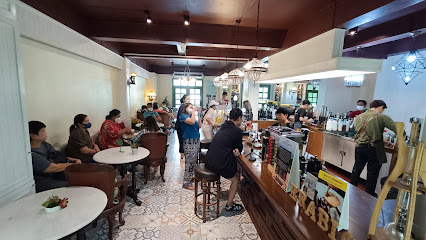
Nan Green House
Experience the rich flavors of Thailand at Nan Green House – your destination for authentic Thai cuisine in Mueang Nan District.

Huean Phukha
Experience authentic Thai cuisine at Huean Phukha in Mueang Nan District - where flavor meets tradition in every dish.

Gin Restaurant
Experience authentic Thai flavors at Gin Restaurant—where tradition meets modern dining in the heart of Nan.

ร้านอาหารสวนสะเนียน จ.น่าน
Discover authentic Thai cuisine at Suan Sanian Restaurant in Mueang Nan – where every dish tells a story.

เตี๋ยวเกยตื้น
Experience authentic Thai cuisine at เตี๋ยวเกยตื้น in Mueang Nan District – where every dish tells a story.

We' Loft
Experience authentic Thai cuisine at We' Loft in Nan – where traditional flavors meet modern dining in a cozy atmosphere.
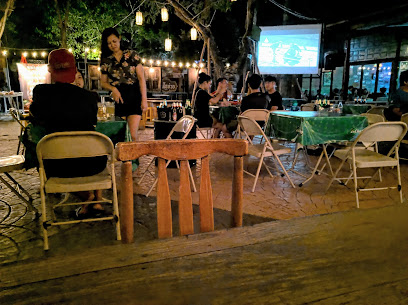
Nan Steakhouse
Savor exquisite steaks at Nan Steakhouse, where quality meets affordability in the heart of beautiful northern Thailand.

Jae Lek Nan Chicken Rice
Discover authentic Thai flavors at Jae Lek Nan Chicken Rice - a local favorite serving delicious chicken rice in the heart of Nan.
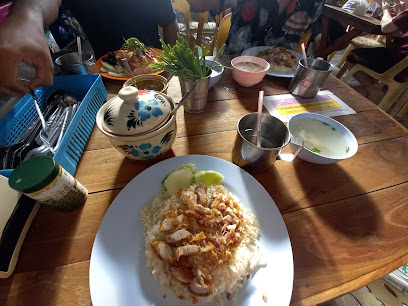
ข้าวซอย น้ำเงี๊ยว แม่สุณี
Savor authentic northern Thai flavors at ข้าวซอย น้ำเงี๊ยว แม่สุณี, where delicious Khao Soi and welcoming vibes await every tourist.
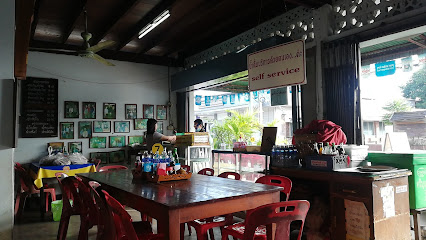
I'shi & Babishi Buffet ไอ'ชิ & บาบิชิ บุฟเฟ่ต์
Explore the vibrant flavors of Thailand at I'shi & Babishi Buffet—your go-to destination for Shabu Shabu and barbecue delights in Nan.

Wevari Heritage (วีวารี เฮอริเทจ)
Discover culinary delights at Wevari Heritage – where exquisite Thai cuisine meets exceptional coffee experiences in beautiful Nan.

Markets, malls and hidden boutiques
ถนนคนเดินกลางคืนน่าน (Nan Night Food Market)
Discover the flavors and crafts of Nan at the vibrant Nan Night Food Market, where every evening unfolds a new culinary adventure.

Erabica Coffee Nan
Discover the cozy charm and delightful flavors at Erabica Coffee Nan, a local favorite for coffee and dessert lovers in Thailand.

Swensen's Flagship Nan
Discover the sweetness of Swensen's Flagship Nan, a premier ice cream destination offering delightful flavors in a warm, inviting atmosphere.

N. Nan Café
Discover the delightful flavors and unique souvenirs at N. Nan Café, where the heart of Nan culture comes alive in every sip and every purchase.

Nan City Weekend Night Market
Discover the essence of Thai culture at Nan City Weekend Night Market, where food, crafts, and local traditions come together in a vibrant celebration.

Workboxes Cafe'
Experience the cozy charm of Workboxes Cafe' in Nan, Thailand, where exceptional coffee meets a warm, inviting atmosphere.

Nan OTOP Centre
Explore the vibrant Nan OTOP Centre, a hub of local craftsmanship and authentic souvenirs reflecting the rich culture of Nan.

Chomphu Phukha Silverware Center
Discover exquisite handcrafted silverware at Chomphu Phukha Silverware Center in Nan, a treasure trove of Thai artistry and cultural heritage.

จางตระกูล Jangtrakul Shop
Explore Jangtrakul Shop in Nan for authentic Thai souvenirs and unique local crafts that capture the essence of Thai culture.

ทีแอนด์ที ช็อป กัญชา T&T Shop Nan Cannabis
Discover T&T Shop Nan Cannabis, a vibrant cannabis store in Nan, Thailand, offering high-quality products and an inviting atmosphere for all visitors.

Co-Working Space & Cafe by Risasinee
Experience the perfect blend of productivity and relaxation at Co-Working Space & Cafe by Risasinee in the heart of Nan, Thailand.

Horizon Harvest - Cafe & Coffee Roaster
Experience the essence of specialty coffee at Horizon Harvest, where artisanal roasting meets a cozy atmosphere in the heart of Mueng.

ร้านกลิ่นหนังสือ
Discover a literary oasis at ร้านกลิ่นหนังสือ in Nan, where every book has a story waiting to be told.

ร้านแสตมป์ จังหวัดน่าน (StampBrand)
Discover a treasure trove of unique gifts and local crafts at StampBrand, a charming gift shop in the heart of Nan, Thailand.

ร้านกัญชา Nan Zone THC
Explore the vibrant cannabis culture at Nan Zone THC, a unique destination in Nan that offers quality products and a welcoming atmosphere.

Essential bars & hidden hideouts
Gin Restaurant
Discover authentic Thai flavors at Gin Restaurant in Mueang Nan, where every dish tells a story of local culture and cuisine.

We' Loft
Discover the authentic flavors of Thailand at We' Loft, a charming restaurant in Nan offering a delightful culinary experience.

X2-Nan
Discover the lively X2-Nan Pub in Mueang Nan, where local culture meets a vibrant nightlife scene for an unforgettable experience.

Core - eatery & bar
Discover the vibrant flavors of Nan at Core - Eatery & Bar, where local and international cuisine meet in a cozy atmosphere perfect for any occasion.

Bitter Bar
Discover Bitter Bar in Nan, where creative cocktails and a vibrant atmosphere come together for an unforgettable night out.
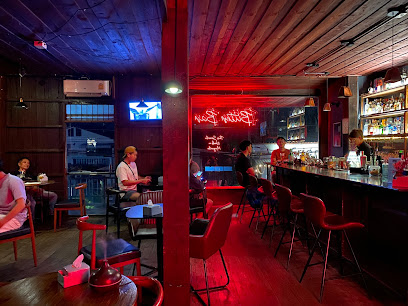
SAY BAR
Experience the vibrant nightlife of Nan at SAY BAR, where delicious drinks and a friendly atmosphere await every visitor.

Niyomsuk Nan Brewery
Discover the unique flavors of Nan at Niyomsuk Nan Brewery, where local brews meet traditional Thai cuisine in a vibrant atmosphere.
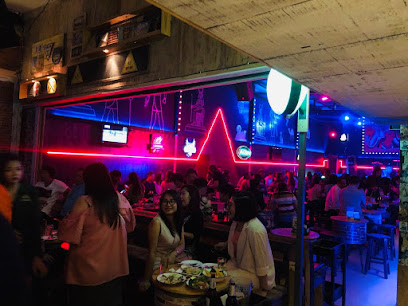
Bacon Bar
Experience the vibrant culinary scene at Bacon Bar, where craft beer, homemade pasta, and a lively atmosphere meet in the heart of Nan.

Rocket to the moon • Craft beer bar • ロッケトトゥザムーン
Experience the vibrant craft beer scene at Rocket to the Moon, a unique bar in Nan, Thailand, offering a diverse selection of brews and a welcoming atmosphere.

Stable
Experience the vibrant nightlife at Stable, a must-visit bar in Mueang Nan with a great selection of cocktails and local brews.
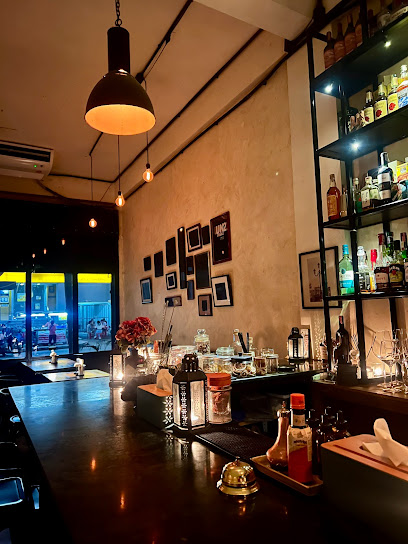
LYKKE Brunch & Wine bar
Experience the perfect blend of brunch, bakery delights, and fine wines at LYKKE Brunch & Wine Bar in Nan, Thailand.

Reera Bar
Experience the vibrant nightlife of Nan at Reera Bar, where delicious drinks and a welcoming atmosphere await every visitor.

Thongbai Glam ทองใบแกลม
Thongbai Glam Bar in Nan, Thailand: A vibrant nightlife hub offering exquisite drinks, lively ambiance, and a chance to connect with locals and fellow travelers.

Restart Bar&Bistro
Discover Restart Bar&Bistro: A perfect blend of delicious Thai cuisine and vibrant nightlife in Nan.

ร้านเชย
Discover the vibrant nightlife at ร้านเชย, a lively bar in Mueang Nan District offering a unique blend of local drinks and modern ambiance.

Travel experiences inspired by this city
Explore more travel diariesLocal Phrases
-
- Helloสวัสดี
[sawasdee] - Goodbyeลาก่อน
[laa kon] - Yesใช่
[chai] - Noไม่
[mai] - Please/You're welcomeโปรด/ยินดีด้วย
[bproht/yin dee duay] - Thank youขอบคุณ
[khop khun] - Excuse me/Sorryขอโทษ
[khor toht] - How are you?สุขสันต์ด้วยไหม
[suk san duay mai] - Fine. And you?สบายดี คุณล่ะ
[sabai dee khun la] - Do you speak English?คุณพูดภาษาอังกฤษได้ไหม
[khun poot pha saa ang grit dai mai] - I don't understandฉันไม่เข้าใจ
[chan mai khao jai]
- Helloสวัสดี
-
- I'd like to see the menu, pleaseขอดูเมนูหน่อย
[khor doo menu noi] - I don't eat meatฉันไม่กินเนื้อ
[chan mai gin nuea] - Cheers!ชนสุดๆ
[chon sut sut] - I would like to pay, pleaseขอจ่ายเงินหน่อย
[khor jai ngern noi]
- I'd like to see the menu, pleaseขอดูเมนูหน่อย
-
- Help!ช่วยด้วย
[chuai duay] - Go away!ไปห่างๆ
[pai yang yang] - Call the Police!โทรตำรวจ
[thor tamruat] - Call a doctor!โทรหมอ
[thor mor] - I'm lostฉันสูญหาย
[chan soon hai] - I'm illฉันไม่สบาย
[chan mai sabai]
- Help!ช่วยด้วย
-
- I'd like to buy...ฉันต้องการซื้อ...
[chan dtong gaan seuu...] - I'm just lookingฉันแค่ดู
[chan kae duu] - How much is it?ราคาเท่าไหร่
[ra kha thao rai] - That's too expensiveแพงเกินไป
[paeng geun pai] - Can you lower the price?ลดราคาได้ไหม
[lot ra kha dai mai]
- I'd like to buy...ฉันต้องการซื้อ...
-
- What time is it?ตอนนี้เวลากี่
[ton nee welaa kee] - It's one o'clockเป็นโมง
[pen mong] - Half past (10)สามสิบครึ่ง
[sam sip kheung] - Morningเช้า
[chao] - Afternoonบ่าย
[bai] - Eveningเย็น
[yen] - Yesterdayเมื่อวาน
[meua wan] - Todayวันนี้
[wan nee] - Tomorrowพรุ่งนี้
[proong nee] - 1หนึ่ง
[neung] - 2สอง
[song] - 3สาม
[sam] - 4สี่
[si] - 5ห้า
[ha] - 6หก
[hok] - 7เจ็ด
[jet] - 8แปด
[paet] - 9เก้า
[gao] - 10สิบ
[sip]
- What time is it?ตอนนี้เวลากี่
-
- Where's a/the...?...อยู่ที่ไหน
[...yu tee nai] - What's the address?ที่อยู่คืออะไร
[tee yu keu a rai] - Can you show me (on the map)?ช่วยแสดงให้ดูได้ไหม
[chuai sa dang hai du dai mai] - When's the next (bus)?รถเมล์ตอนต่อไปเวลาไหน
[rot mel ton dtor bpai welaa nai] - A ticket (to ....)ตั๋วไป...
[dtua bpai...]
- Where's a/the...?...อยู่ที่ไหน
History of Nan
-
Nan's history dates back over 700 years, rooted deeply in the Lanna Kingdom, an ancient kingdom in the north of Thailand. Founded in the late 13th century, Nan was initially an independent city-state before becoming a part of the Lanna Kingdom in 1449. This period marked the beginning of a rich cultural and historical journey for Nan, evidenced by its distinct architectural styles and religious sites.
-
During the 15th and 16th centuries, Nan saw a significant influx of Tai Lue people from southern China. This migration greatly influenced the local culture, bringing unique customs, traditions, and artistic styles that are still evident today. The Tai Lue people contributed to the agricultural and social development of Nan, making it a vibrant cultural hub.
-
In the 16th century, Nan, like much of northern Thailand, fell under Burmese control. This period of occupation lasted until the late 18th century and had a profound impact on the city’s cultural landscape. Many temples and structures built during this time show a blend of Lanna and Burmese architectural influences.
-
By the late 18th century, Nan was integrated into the Kingdom of Siam (modern-day Thailand) under King Rama I. This transition brought about significant changes in governance and societal structure. Nan's rulers, known as Chao, were allowed to maintain semi-autonomous control, which helped preserve the city's unique cultural identity while integrating into the broader Siamese realm.
-
The 20th century brought modernization to Nan, alongside the rest of Thailand. Infrastructure improvements, such as the construction of roads and the introduction of electricity, transformed the city's landscape. Despite these changes, Nan has managed to preserve much of its historical charm and cultural heritage. The city remains a testament to its storied past, with numerous temples, museums, and historical sites that attract visitors from around the world.
-
In recent years, Nan has experienced a cultural renaissance, driven by efforts to preserve and promote its rich heritage. Festivals celebrating Tai Lue traditions, restoration of ancient temples, and initiatives to support local artisans have all contributed to a renewed interest in Nan’s cultural legacy. This renaissance has made Nan an increasingly popular destination for those seeking to explore the deep cultural and historical roots of northern Thailand.
Nan Essentials
-
Nan is located in the northern part of Thailand. The nearest major airport is Nan Nakhon Airport (NNT), which offers daily flights from Bangkok operated by airlines such as Nok Air and AirAsia. Alternatively, you can take a bus from Bangkok's Mo Chit Bus Terminal to Nan, which takes approximately 9-10 hours. There are also train services to Den Chai, the nearest train station, followed by a bus or taxi ride to Nan.
-
In Nan, transportation options include local taxis, songthaews (shared taxis), and motorbike rentals. Songthaews are an affordable way to get around and are available in most parts of the city. Motorbike rentals are convenient for exploring the surrounding areas. For longer distances, you can hire a private car or use intercity bus services from the Nan Bus Terminal.
-
The official currency in Thailand is the Thai Baht (THB). Credit cards are widely accepted in hotels, restaurants, and larger shops, but it's advisable to carry cash for smaller establishments and markets. ATMs are readily available throughout Nan, and currency exchange services can be found in banks and some hotels.
-
Nan is generally a safe destination for tourists. However, it is advisable to take standard precautions such as avoiding poorly-lit areas at night and keeping an eye on your belongings in crowded places. Petty theft can occur, particularly in busy areas like markets, so remain vigilant. There are no specific high-crime areas targeting tourists, but always stay aware of your surroundings.
-
In case of emergency, dial 191 for police assistance or 1669 for medical emergencies. Nan Hospital is the main medical facility in the city, and there are several clinics and pharmacies for minor health issues. It is recommended to have travel insurance that covers medical emergencies. Keep a copy of important documents, such as your passport and travel insurance, in case they are needed.
-
Fashion: Do dress modestly, especially when visiting temples. Avoid wearing revealing clothing. Religion: Do respect local customs and traditions. Remove your shoes before entering temples and dress appropriately. Public Transport: Do be respectful and give up your seat to elderly passengers. Don't eat or drink on public transport. Greetings: Do greet people with a 'wai' (a slight bow with palms pressed together). Eating & Drinking: Do try local delicacies and accept food offerings graciously. Don't refuse hospitality, as it is considered impolite.
-
To experience Nan like a local, visit the local markets such as the Nan Walking Street Market, which operates on weekends and offers a variety of local products and street food. Engage with locals, who are often friendly and willing to share stories about the city's history and culture. Don't miss visiting the Nan National Museum and the Wat Phumin temple, known for its stunning murals. For a unique experience, explore the nearby Doi Phu Kha National Park, which offers beautiful scenery and hiking opportunities.
Trending Landmark in Nan
-
Wat Phumin
-
Wat Phra That Khao Noi
-
Doi Samer Dao
-
Bo Kluea Rock Salt Well
-
Doi Phu Kha National Park
-
Wat Ming Mueang
-
Khun Sathan National Park
-
Nan Riverside Art Gallery
-
ถนนคนเดินกลางคืนน่าน (Nan Night Food Market)
-
Nan National Museum
-
Sapan Waterfall
-
Si Nan National Park
-
Sao Din Na Noi
-
Nan Noble House
-
Wat Hua Khuang
Nearby Cities to Nan
-
Things To Do in Chiang Rai
-
Things To Do in Loei
-
Things To Do in Vang Vieng
-
Things To Do in Luang Prabang
-
Things To Do in Chiang Mai
-
Things To Do in Vientiane
-
Things To Do in Sukhothai
-
Things To Do in Pai
-
Things To Do in Phonsavan
-
Things To Do in Udon Thani
-
Things To Do in Muang Sing
-
Things To Do in Xieng Khouang
-
Things To Do in Mae Hong Son
-
Things To Do in Hpa-An
-
Things To Do in Kyaiktiyo













